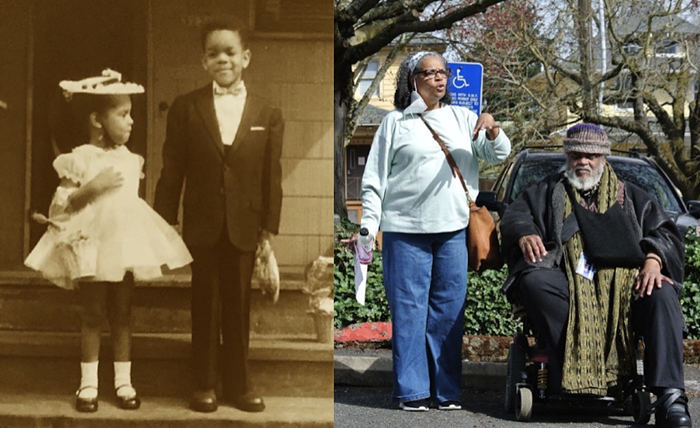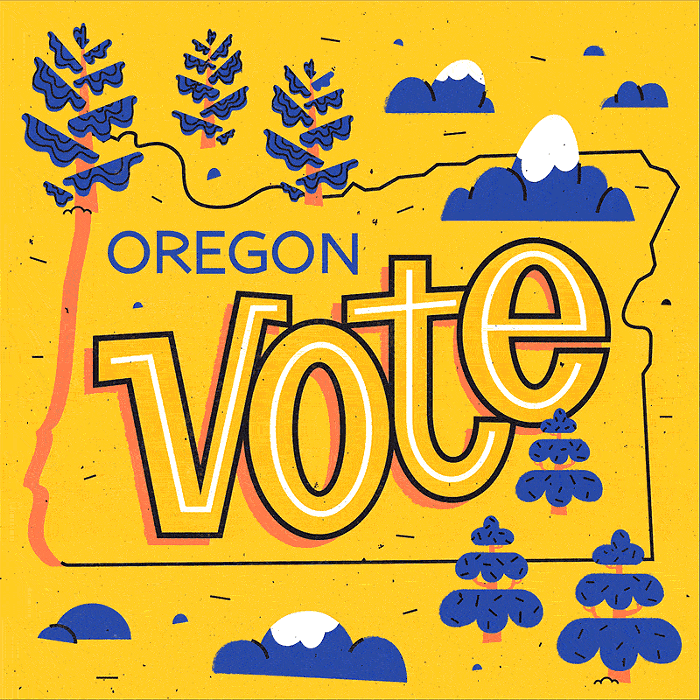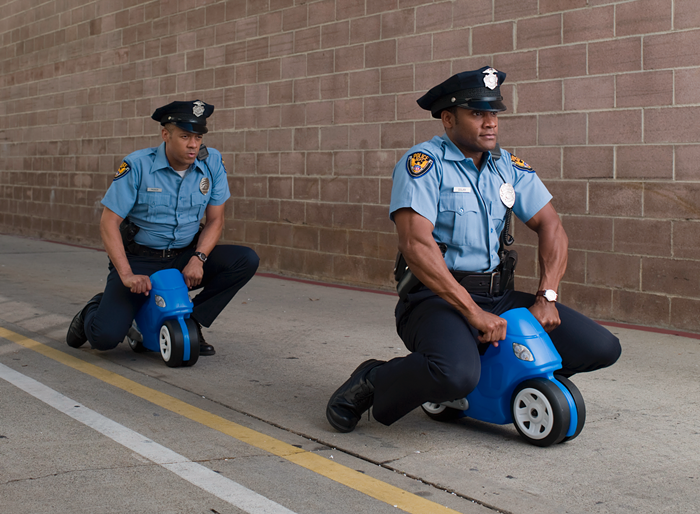FOR HER SHOW Great Structures Still Standing, S. Tudyk painted old roadside signs and drive-ins. Tudyk's paintings evoke art theory (signs and symbols, Derrida), but also social media. They make me think about how we get attention these days, and how it's different now from the way it was in the past; there's a stark contrast between the way we carry around integrated, pocket-sized advertisements on our phones, and the way most advertisements used to be: larger than life.
That being said, these paintings have aesthetic appeal too. They are lovely, and there are a lot of them—more than 40, painted in acrylic on wood panels, and ranging in size from six by six inches to 40 by 30. Some of the best paintings are in the Message series; they are Tudyk's most dynamic work, with shadows from scaffolding cutting sharp forms into the landscape. They are studies of single letters within larger signs. They feel more finished than some of the other pieces—more thoughtfully rendered—and the small size of the paintings shrinks the massive signs to a dimension that makes them nearly handheld.
Tudyk's work recalls artists like Ed Ruscha—his paintings of gas stations and the Hollywood sign—as well as László Moholy-Nagy, with the hard geometry and intersecting lines of her series harkening back to Russian Constructivism. The colors are muted (blues, greens, and Payne's gray), just as a lot of the signs have deteriorated and faded over time. There's a subtle sense of experimentation in all the paintings, with some collaging and different finishes.
Like Ruscha's paintings, a number of the pieces have text in them. "Remember Me This Way (and I'll Remember You...)" is a painting with its title written in caps, fading, with shrubbery closing in. It might seem heavy-handed, but it also made me chuckle: The text calls to mind a song from the '90s movie Casper and the '70s song by Gary Glitter. It's easy to find a personal connection to this series and to feel a little nostalgia. For me, the whole series recalls an idiosyncratic (yet favorite!) activity from my youth, growing up in the boonies of Eastern Montana: driving around looking for old, abandoned, graffitied homesteads to check out. Other people might remember more typical experiences like summer drive-in theaters or family road trips.
With Tudyk's show, Land Gallery continues its pattern of featuring solid work—often with a bent toward illustration—as seen in recent shows by artists like Nikki McClure, and ICON 8, a group show linked with last year's ICON Illustration Conference.
Thanks to features in publications like the New York Times and Sunset, N Mississippi itself is one of those Portland streets currently exploding with tourism. As I was leaving Land, I overheard a couple say to one another, "Oh, this is like a tourist place, with cards and stuff." Land Gallery is obviously a lot more than that, with many local artists showing in the gallery and consistently strong offerings in an unpretentious space.













